
views
Removing Transmission Solenoid Valves
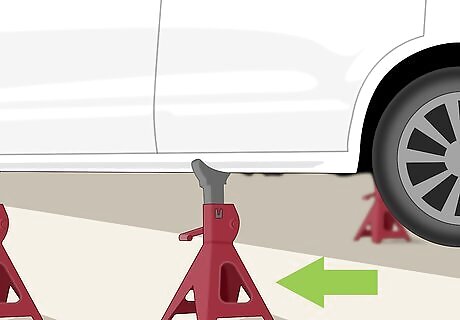
Jack up your vehicle with jack stands so you can get underneath it. Park your vehicle on a flat surface, such as in a driveway or a garage. Block the rear wheels with wedges or blocks of some kind and position jack stands under the jack points. Jack the vehicle up enough that you can comfortably crawl underneath the front end. Never use a regular jack, like the kind that comes with your spare tire, for jobs that require you to crawl underneath your vehicle. Always use more stable jack stands for this type of work.
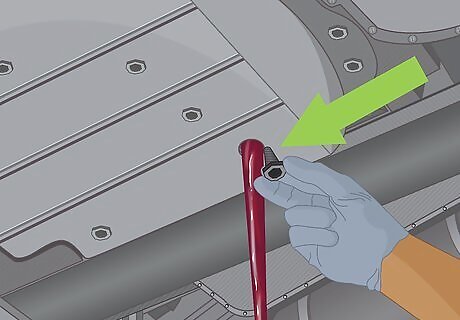
Drain the transmission fluid from the pan underneath the transmission. Crawl under your vehicle and locate the drain plug on the transmission fluid pan. Place a receptacle to collect the transmission fluid directly under the plug, then pull the plug out and let all the fluid drain out. If you don’t want to stain the ground with transmission fluid, place a large piece of cardboard or another absorbent material on the ground underneath the pan before you start draining the fluid. This way, any rogue drips or splatters will get soaked up.
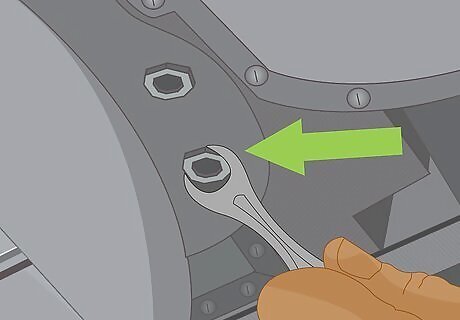
Unbolt the transmission fluid pan from the transmission. Use a wrench to remove all the bolts that attach the pan to the underside of the transmission. Carefully remove it and set it down on a piece of cardboard, a rag, or in a container of some kind so you don’t get transmission fluid everywhere. There are typically about 6-8 bolts that hold the pan in place.
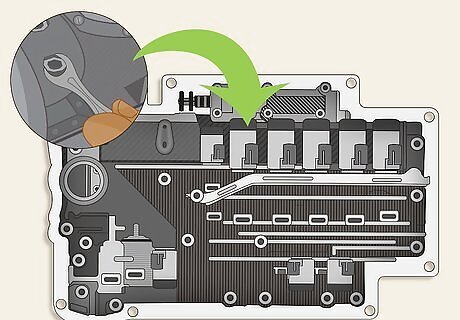
Locate the transmission solenoid valve body on your transmission. Look at the wire harnesses coming out of the bottom of the transmission. The metal cylinders that they are attached to are the solenoid valves, and the assembly that the valves are plugged into is the solenoid valve body. Vehicle transmissions vary greatly from model to model, so the exact appearance of the solenoid valve body depends on your vehicle. Once you find the solenoid valves, you can tell what the solenoid valve body is. You should be familiar and comfortable with your vehicle’s transmission to take it apart and complete this job successfully. If you don’t have any experience working on your vehicle’s transmission, get a licensed mechanic to do this job for you.
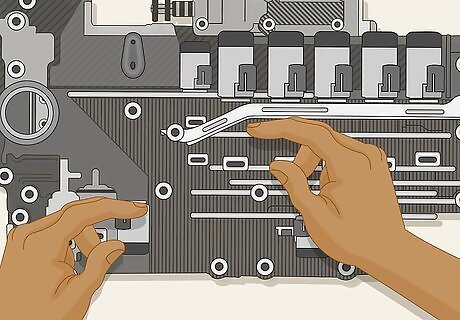
Remove the solenoid valve body from the transmission. Unplug all cable harnesses from the colored pieces at the top ends of the cylindrical solenoid valves to disconnect the transmission’s electrical connections. Use a wrench and a screwdriver to remove all bolts and screws that are holding the block-like assembly in place. Carefully pull the solenoid valve body off the underside of the transmission and place it on a flat work surface. The solenoid valve body will have some transmission fluid on it, so make sure to use a work surface that you can get dirty or put something absorbent down to protect the surface.
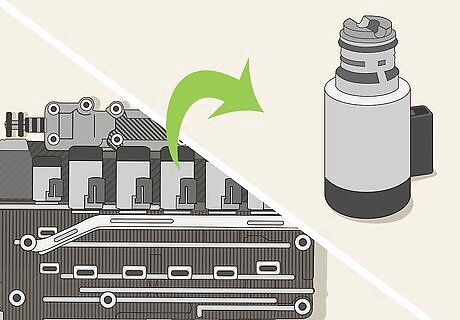
Pull the individual solenoid valves out of the solenoid valve body. Notice each cylindrical, metal solenoid drive plugged into the block-like solenoid valve body assembly. Unscrew any flat metal plates attached over the valves and pry out any U-shaped pins holding the valves in place, then pull each valve out and set it down on your work surface.Tip: Take a picture before you remove the solenoids so you have a reference when you put them back together. The solenoids must go back in the same order. Different types of vehicles have different numbers of transmission solenoid valves, but there are typically 2-4. The number of valves completely depends on the make and model of the vehicle and there is no hard rule to know how many valves a transmission has.
Cleaning the Solenoid Valves

Spray MAF sensor cleaner through each filter screen on each solenoid valve. Each solenoid valve typically has 1 filter screen on the bottom and several on the sides. Hold a solenoid valve over an absorbent surface, such as a rag. Spray the MAF sensor cleaner through each screen using the red straw attachment on the spray nozzle. Repeat this for each valve.Tip: You will see the cleaner coming out dirty through the filter screens when you initially spray them. Keep spraying it through the filters until it doesn’t come out looking dirty anymore. MAF (mass air flow) sensor cleaner is a chemical spray solution made for cleaning sensitive auto parts. It is designed to remove oil, dirt, fibers, dust, and other debris to clean and unclog the parts. You can purchase MAF sensor cleaner online or at an auto parts shop.
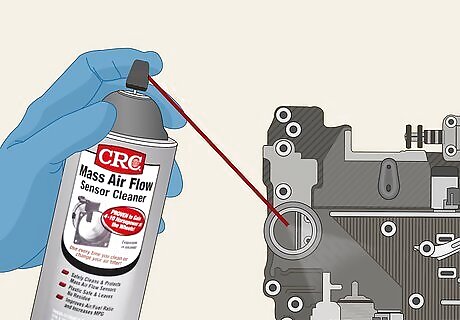
Clean the outside of the solenoid valves with the spray as well. Aim the red straw attachment at the metal cylinder part of each valve. Spray all over the surface to remove exterior grime. Make sure you continue to hold the valves over your absorbent work surface and aim the spray can at it so you don’t spray cleaner all over the place.
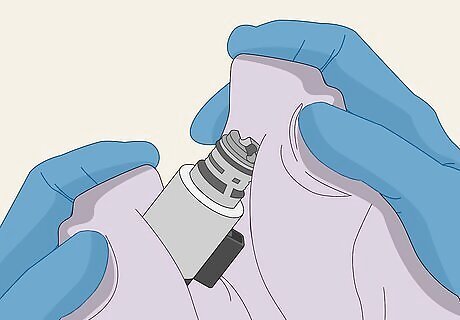
Wipe down the valves with a rag to dry them. Shake out the valves over a rag to get any excess cleaner out of the filters. Use a rag to thoroughly wipe down the outside of each valve. This will also get rid of any remaining grime on the outsides of the valves.
Putting Everything Back Together

Put the solenoid valves back into the solenoid valve body. Plug each cylindrical solenoid valve back into the slots on the solenoid valve body assembly that you removed them from. Slide any U-shaped holding pins back into place and screw any flat metal plates that attach the valves to the block-like assembly back on. If the top ends of the valves are all the same color, they are interchangeable. If there are different colors, each color will only fit correctly in the hole that you pulled it out of.
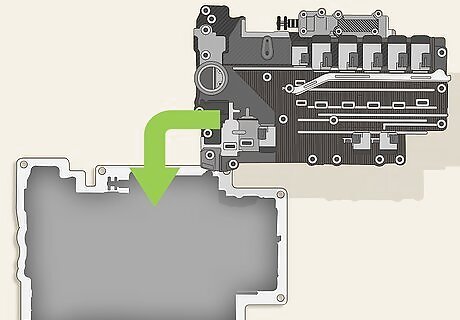
Attach the solenoid valve body back onto your transmission. Slide the solenoid valve body assembly back up underneath the transmission and line up the bolt and screw holes. Tighten the bolts and screws back into the holes to reattach the assembly. Plug the electrical cables back into the solenoid valves. If the solenoid valves have different colored top ends, make sure the color of the cable harness you plug into each one matches.
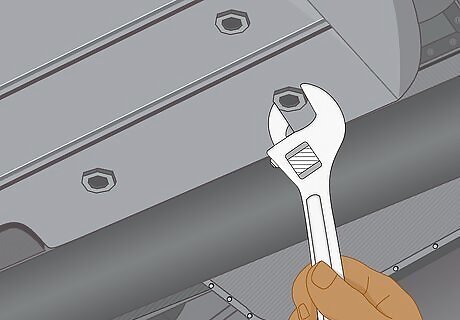
Bolt the transmission fluid pan to the bottom of the transmission. Wipe off any remaining old transmission fluid from around the transmission fluid pan and place it back onto the underside of the transmission. Reattach it using the bolts you removed when you took it off. It’s easiest to do this if you put in each bolt and tighten it 2 turns or so, then tighten them all the way once all the bolts are in place. That way, you don’t have to hold the pan in place for as long.
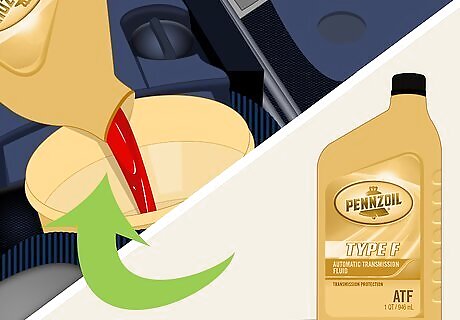
Fill your transmission with transmission fluid. Place a funnel in the dipstick hole at the top of the transmission. Pour in transmission fluid a little at a time, checking the level with the dipstick as you go, until it reaches the full or max level mark. Make sure you use the correct transmission fluid, as recommended by the manufacturer. For example, you might put Type H Automatic Transmission Fluid (ATF) in a Honda Civic, while you might put Dexron III ATF in a BMW.


















Comments
0 comment